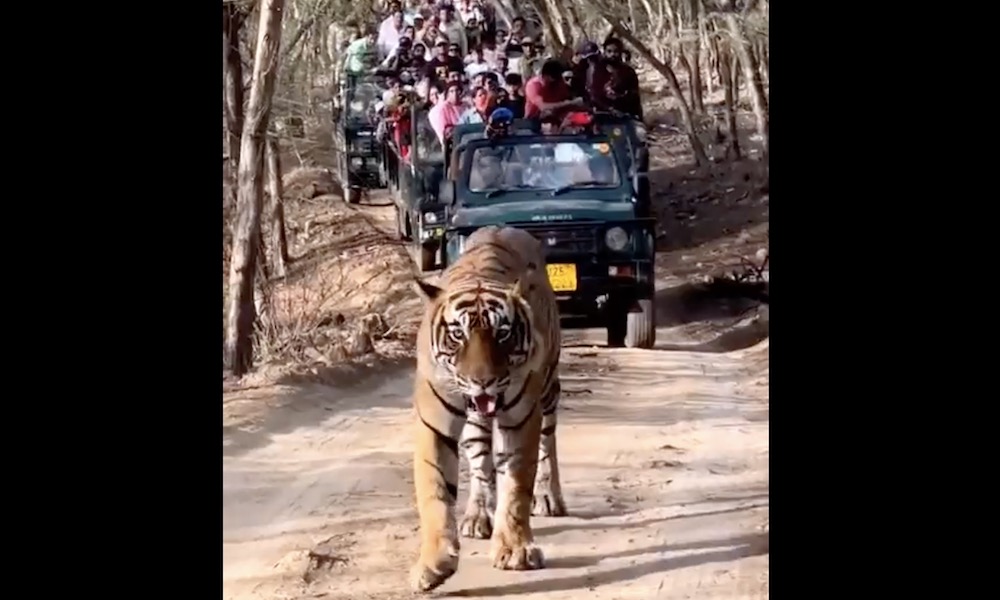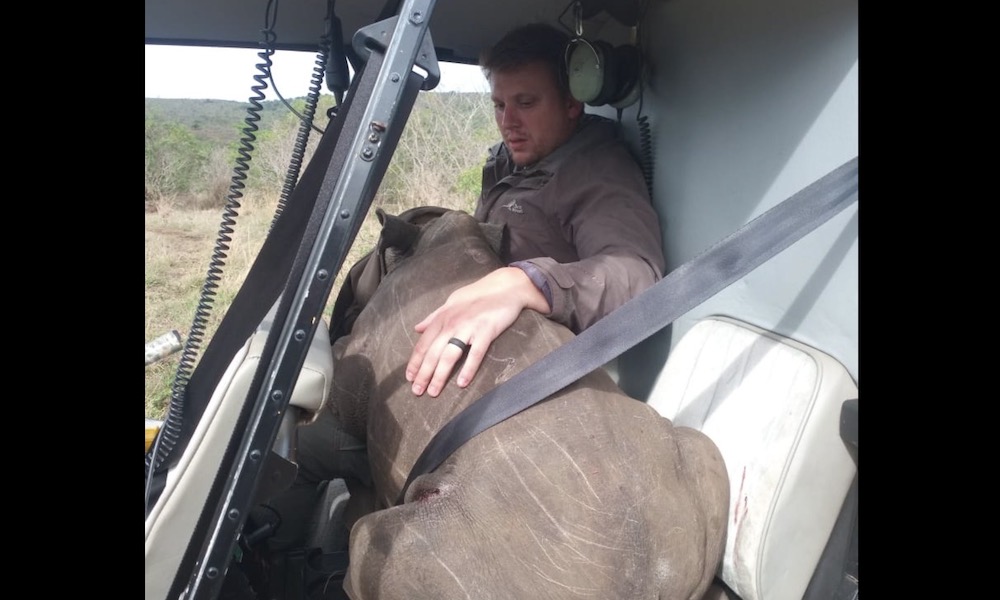Footage showing safari vehicles packed with tourists following closely behind a large tiger has drawn criticism for an obvious reason.
“The great Indian tiger show. Please maintain some sense & distance,” Susanta Nanda of the Indian Forest Service stated in a tweet.
The footage (posted below) was captured by Swati Yardi from a vehicle in front of the tiger as the majestic animal strolled casually on a dirt path.
Yardi shot back: “These vehicles or crowd you see in back are not unnecessary vehicles but allowed ones in the zone as per department.”
The great Indian tiger show😣😣
Please maintain some sense & distance 🙏 pic.twitter.com/rg1XKzx6v7— Susanta Nanda (@susantananda3) June 7, 2023
Nanda: “The vehicles are allowed not to chase the wild. The behavior is unwarranted. Don’t forget that the guidelines say to maintain minimum distance of at least half-a-kilometer between two safari vehicles when they are ferrying people in a tiger reserve.”
ALSO: Yellowstone guide saves motorist from momma grizzly bear’s wrath
Yardi: “Agree sir with you. I just hope this is been followed in all forests because as I have done safaris since more than half decade in different parts of Indian forests, and never seen distance of half km. Sad reality everywhere. I only wanted to mention there was no disturbance to the tiger.”
Some in the comments criticized the Indian government for not enforcing regulations.
Tigers are endangered, but staunch conservation efforts have enabled the tiger population in India to increase from a record low of 1,411 animals in 2006 to more than 3,000 animals.
–Image and video courtesy of Swati Yardi

